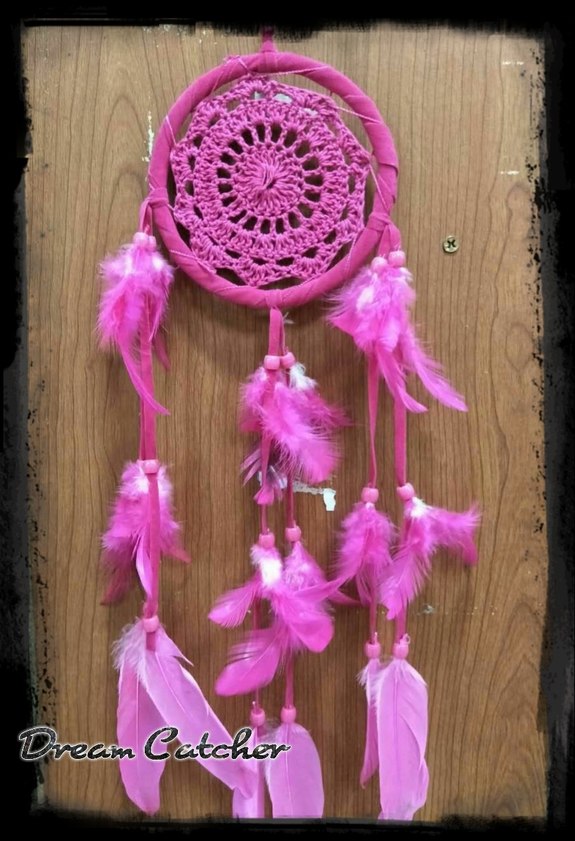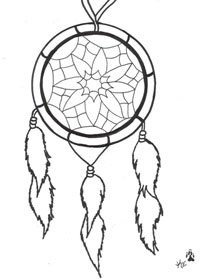Authentic Ojibwe Dream Catcher
Authentic Native American Dream Catchers, artifacts, real dreamcatchers, traditional dream catchers, dream catchers and American Indian art made in the USA by Jasmine Battle, Cherokee dream catcher artist, medicine bags, sage, housewarming, kits. May 03, 2018 According to Ojibwe legend about dreamcatchers, it is believed that each carefully woven web will catch your dreams in the night air. The bad spirit dreams will become entangled in the web and disappear on the breeze of the new day.
Question: 'Is it wrong for a Christian to have a dream catcher?'Answer: Dream catchers have long been a part of Native American religion, lore, and art, originating with the Ojibwe, or Chippewa, and the Lakota, a confederation of seven Sioux tribes. Dream catchers are webbed and beaded circles hung with feathers from the base of the circle. As one might suspect, the purpose of a dream catcher is to catch dreams—that is, to trap bad or evil dreams and channel good dreams to the sleeper. Dream catchers are usually placed in a window or above the bed, allowing the good dreams to drip down the feathers onto the sleeper below.


Essentially, a dream catcher is intended to manipulate the spirit world. Some people believe in the efficacy of dream catchers. Others are unsure but are superstitious enough to keep one in the bedroom. Still others see dream catchers as part of a cultural history or a piece of art that looks good dangling from a rear-view mirror.
Knowing the background of dream catchers and their talisman-like use, many Christians want nothing to do with them. Is such concern warranted? A passage in 1 Corinthians 8 may be helpful. Paul is speaking to Christians living in an extremely pagan culture ruled by superstition, magic, and sacrifices, all done in the name of various idols. The sacrifices were a particular concern, for the meat sacrificed was then sold at market. Some Christians felt eating sacrificed meat was endorsing the sacrifice and therefore inappropriate for a Christian; others believed that, since they were not worshiping the idol themselves, it was not wrong.
Paul’s guidance was this: “There may be so-called gods in heaven or on earth—as indeed there are many “gods” and many “lords”—yet for us there is one God. . . . However, not all possess this knowledge. But some, through former association with idols, eat food as really offered to an idol, and their conscience, being weak, is defiled” (1 Corinthians 8:5–7). Ultimately, “food will not commend us to God. We are no worse off if we do not eat, and no better off if we do,” yet we must be careful “that this right of yours does not somehow become a stumbling block to the weak” (1 Corinthians 8:8, 9). Just as it was with meat associated with idolatry in the 1st century, so it is with superstitious objects in the 21st.
The Christian understands that false gods are nothing and that a dream catcher has no power in itself. The believer in Christ could easily see a dream catcher as nothing more than a craft or a cultural expression. However, before he buys a dream catcher and hangs it in the window, he should consider other people’s reactions to it. Will others see it as a charm to manipulate the spirit world? Will someone assume the one in possession of a dream catcher approves of Indian religions? Keeping a dream catcher is a matter of conscience; as long as it is not used as a good luck charm, it is innocent enough. But consideration must be given to those we seek to minister to.
gwekwe`!
This weeks post focuses on something I love: dream catchers. I do not know what cultural feature to label this as. Would it be arts and crafts? Superstition or beliefs? Whatever it is, we are going to take a deeper look into the culture and discover the significance and symbolic meaning behind the item in context of Native American culture. Let’s explore a little bit of the history behind the dream catcher in Native American culture.
History:
The dream catcher is considered to be a traditional Native American item that originated from the Ojibwe (Chippewa) tribe. For those who do not know, the Ojibwe tribe is from Minnesota, like me! The original version of the dream catcher was not always as fancy and elaborate as they are today. In the past, Native Americans constructed dream catchers from the bones and tissue of animals, also called sinew, and wrapped them in a web around a small frame. In fact, the native word for dream catcher, asabikeshiinh, actually means “spider” specifically because of the web-like design. They were also decorated beautifully with sacred items, and were usually handcrafted using only natural materials. Also, another feature of authentic dream catchers is that they typically only measure a few inches long.
I included a picture I found on the internet of what a traditional dream catcher may look like. This may seem different from what you are used to seeing for a number of reasons. First, the shape of the frame is unique. Not only that, but it is composed of a bundle of what appear to be sticks. If you look closely at the image it becomes evident that the webbing inside is not typical string, but the tan color is actually indicative of sinew, which adds to the authenticity of the object.

Meaning:
The purpose of the dream catcher is still consistent with what we relate it to today. They are items that are used to get rid of bad dreams and protect us while we sleep. The web design of the dream catcher is influenced by the symbol meaning of the spider to the Ojibwe. Instead of cringing in disgust when seeing a spider, the Ojibwe viewed the spider as a form of comfort and protection.
Story of its creation:
“According to the Ojibwa story, a mystical and maternal “Spider Woman” served as the spiritual protector for the tribe, especially for young children, kids and babies. As the Ojibwe people continued to grow and spread out across the land, The Spider Woman found it difficult to continue to protect and watch over all the members of the tribe as they migrated farther and farther away. This is why she created the first dreamcatcher.”
Modern take:
Nowadays it is not hard to find dream catchers. They are plastered on almost anything from clothing to skin (being tattoos, of course). Also, the designs that appear are often intricate and elaborate pieces heavily decorated with colorful cloth, beads, feathers, and other jewelry. The contrast between the traditional style versus what we find now is drastic.
Observe the picture I added below. The frame is perfectly circular, threaded with an array of colored thread. The design itself is perfectly laced inside the frame. Not only is string used instead of the traditional sinew, but it is knitted together with beads. Rather than one frame, smaller dream catchers are attached to the larger frame, decorated with more colorful feathers, string, and beads. This, in comparison with the traditional style, appeals more to a modern audience and seems to be lacking the traits of its cultural identity.
I hope you all enjoyed getting to know a more about a small part of Native American culture! Thanks for reading!
Sources:
http://www.native-languages.org/dreamcatchers.htm
Authentic Ojibwe Dream Catcher For Sale
https://www.pinterest.com/wmtorwalt/dream-catchers/
https://www.pinterest.com/explore/dream-catchers/?lp=true
Dream Catcher Meaning
http://legomenon.com/dreamcatcher-meaning-legend-history-origins.html